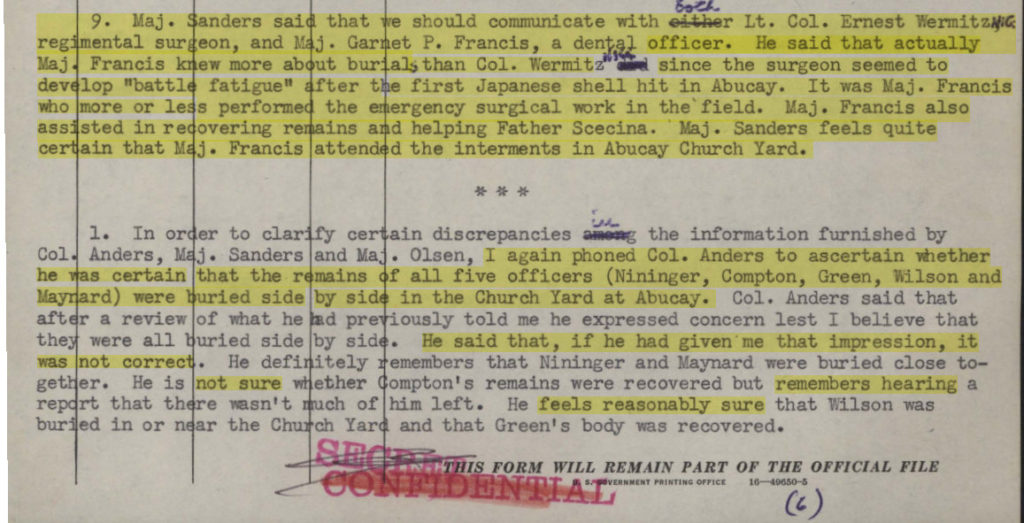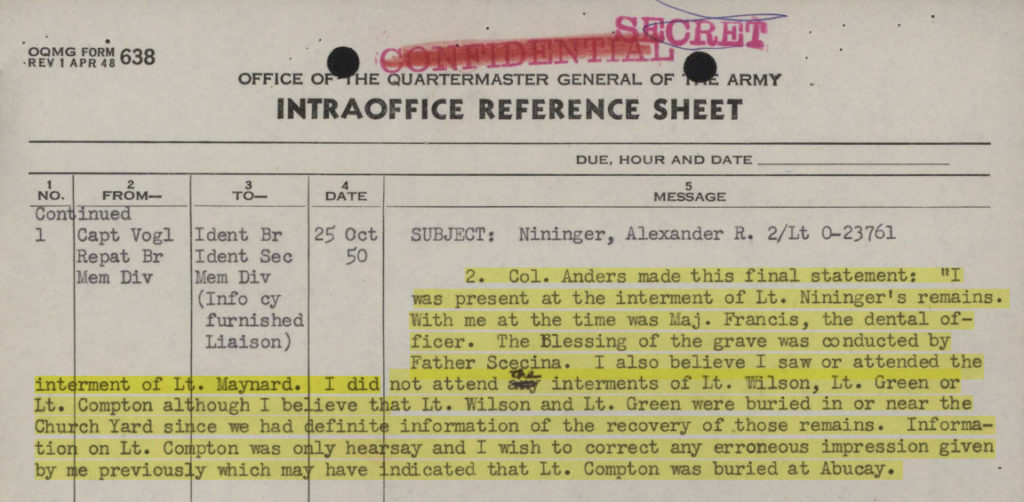If the facts don’t fit the theory, change the facts. If you still don’t like the facts, just hide the evidence.
That’s exactly what the Army’s Memorial Command in Washington did. They had received conflicting information as to the burial location of a hero who had received the Medal of Honor. They dared not be wrong so they ignored all the facts and did nothing – just covered their tracks.
”READ_MORE”
In spite of repeated investigations conducted by the Graves Registration command in the Philippines, Washington chose to overrule their recommendations and rely on the testimony of a discredited officer who wasn’t present and whose testimony had repeatedly been found to be incorrect. When it was learned that they had picked the wrong horse, Washington declared the remains to be non-recoverable, told all the witnesses to toe the official line, and classified the records as defense secrets.
Within days after X-1130 was laid to rest as an Unknown in the Manila American Cemetery, the Memorial Division in Washington began an investigation in to the facts. They interviewed all the presumed witnesses to the burial of 1LT Alexander Nininger. They found that none of them had actually been present, and, quite tellingly, carefully avoided talking to those who actually were present.
The first person interviewed was Colonel George S. Clarke who had commanded the 57th Infantry Regiment (PS) at the time of Nininger’s death. Clarke had been relieved of his command – the ultimate disgrace for a career officer – and ordered to the island fortress of Corregidor before Nininger, Wilson, Compton or Green were buried. If he had information on the burial locations, it was second hand because he wasn’t present.
Clarke left the Philippines on the last submarine out and made his way back to the States. While the war raged in the Pacific theater, Clarke was in touch with the families of some of the men he had lost. We’ll never know if Clarke was trying to redeem his tarnished image or somehow comfort the families, but he told them in flowery language that their sons had been buried in the Abucay churchyard rather than their actual burial sites.
The families accepted Clarke’s incorrect information as gospel and shared it with the Army and their congressional representatives. The Army’s Memorial Division not only believed Clarke’s information as it was coming from the families and members of congress, they continue to stand on it to this day even though it has been repeatedly shown to be false.

The next to be interviewed was Lieutenant Colonel Anders. He explained that Clarke had been relieved and had left Bataan. He unequivocally stated that Clarke had not attended the burials. In later interviews, Anders stated that he and Major Francis were the only ones present for the burials. And while Anders first placed the burials in the Abucay churchyard, he later confessed to some confusion about the burial locations.

Major Sanders, another officer of the 57th Infantry, informed the investigators that Major Francis had assisted Chaplin Scecina with the burials and would have been present for them.

In a second telephone interview, Anders again demonstrated some confusion about the burial locations.
Next to be interviewed was Major John Olson who said that LTC Anders and Major Francis attended the burial services.

When interviewed a second time, LTC Anders confirmed that he and Major Francis were present at Nininger’s burial, but he again demonstrated some confusion about the burial locations.
In light of the fact that the Abucay Churchyard had been repeatedly excavated and the remains were not found, it is pretty obvious that they were not buried there.
The bottom line at this point was that:
1. The burial locations given by Clarke were incorrect.
2. Only Major Anders and Major Francis were present for Nininger’s burial.
3. Major Anders stated that Nininger had been buried in the Abucay Churchyard, but showed some confusion about the locations.
4. The churchyard had been excavated at least three times.
5. Major Francis was not interviewed by the Memorial Division investigator, but later placed the burials in the Abucay Cemetery – NOT the Abucay Churchyard.
If they hadn’t yet been convinced that Nininger, Wilson, Compton, Green and Maynard had not been buried in the Abucay churchyard, the investigation conducted by the Memorial Division should have removed all doubt. However, rather than admit their error and accept the identification of X-1130/X-4685 as Nininger’s remains they chose the cowards’ choice and did nothing – except conceal the records.
Still to come – the family’s fifty year quest to find the remains of 1LT Alexander Nininger despite the Army’s continued efforts to conceal their duplicity.
”READ_LESS”
